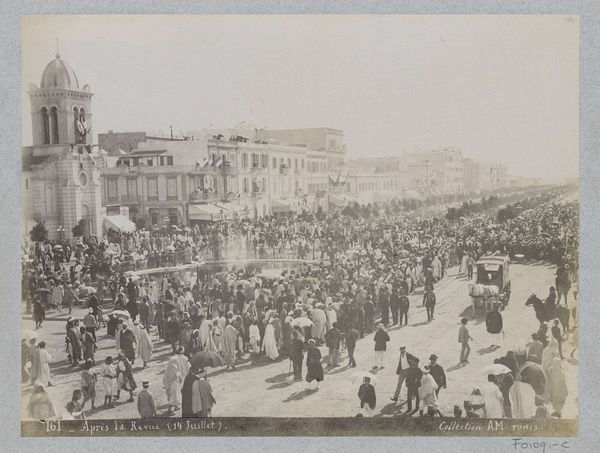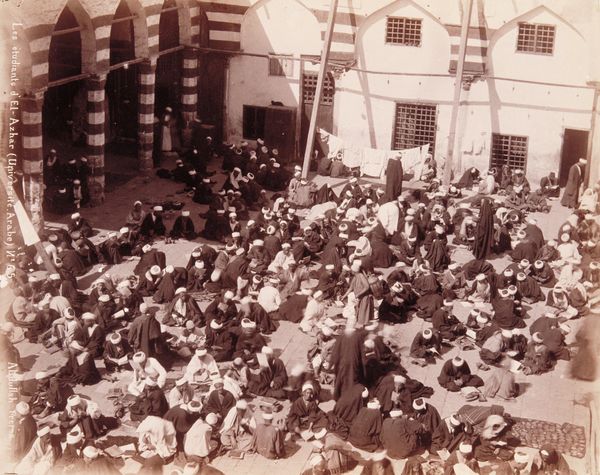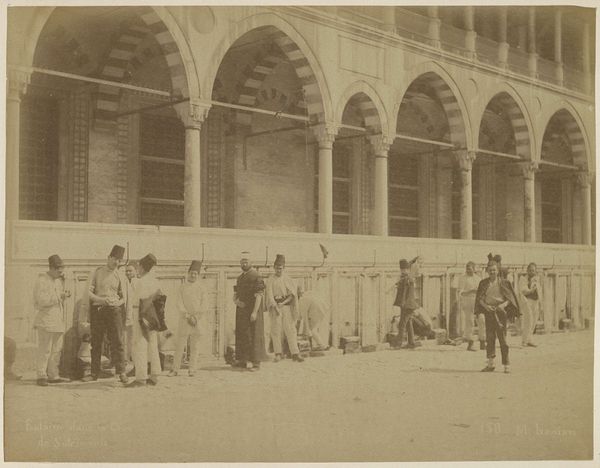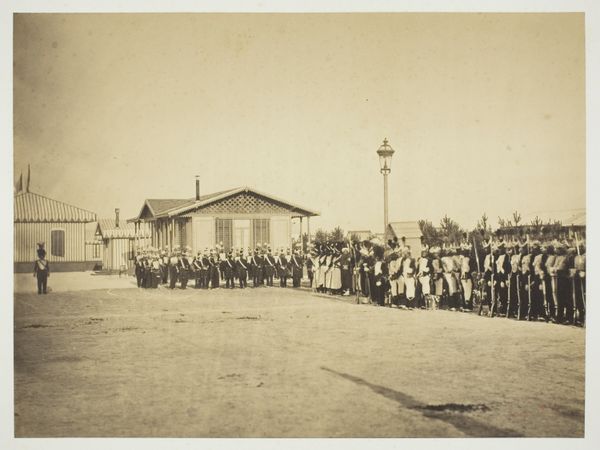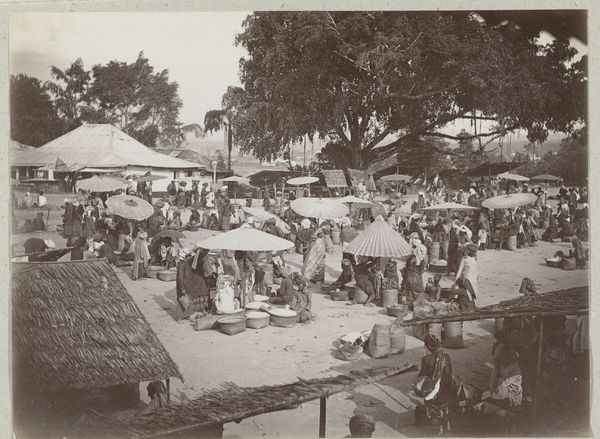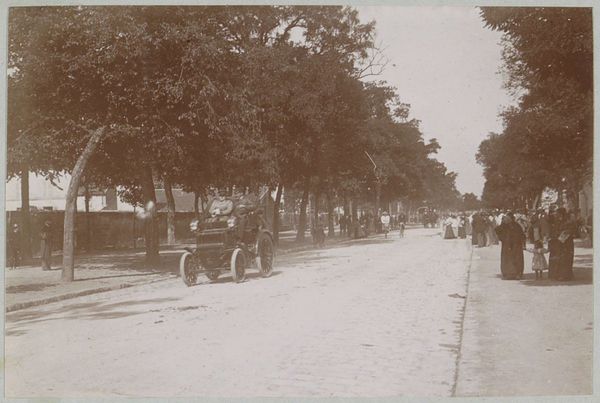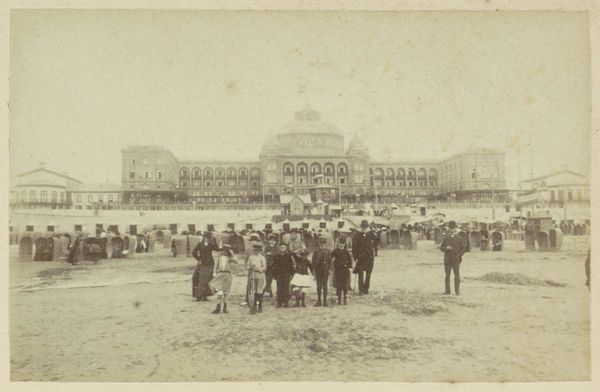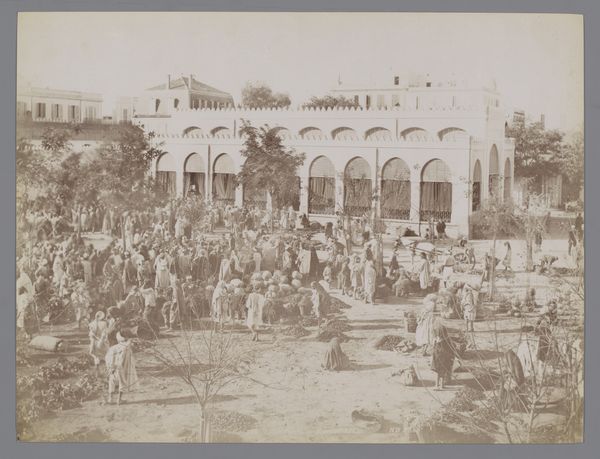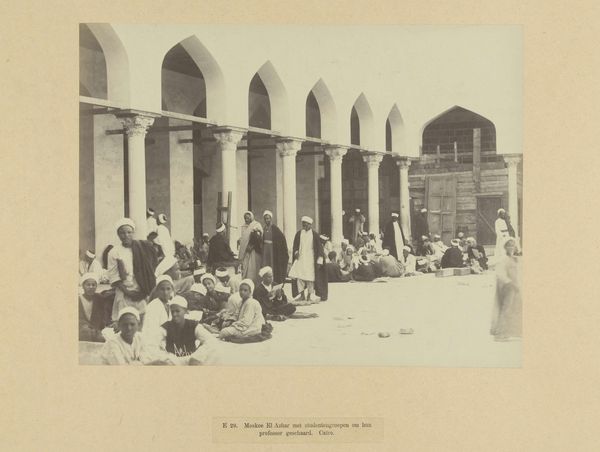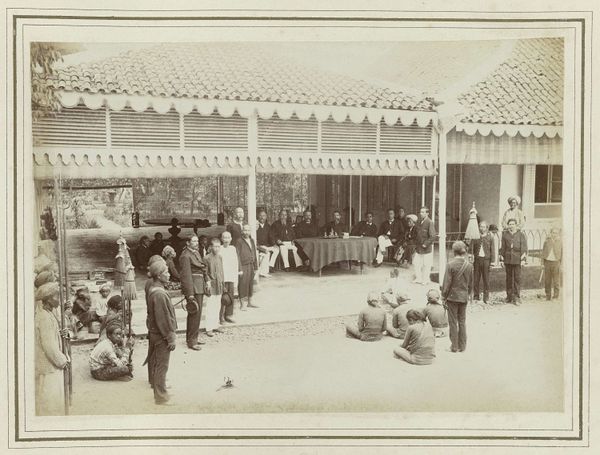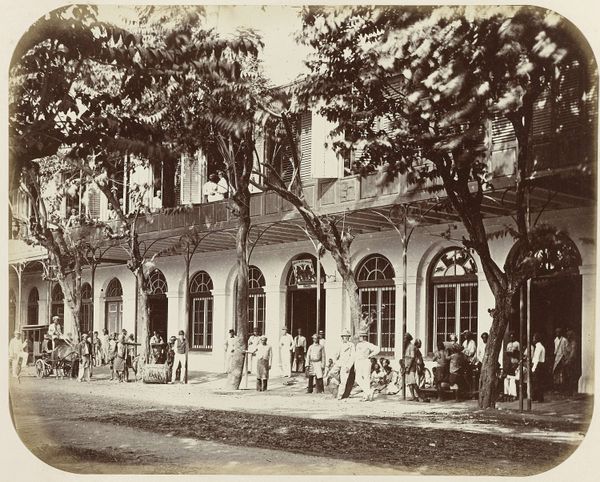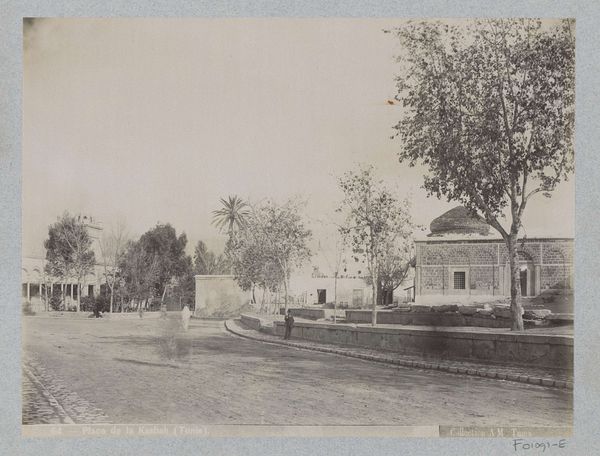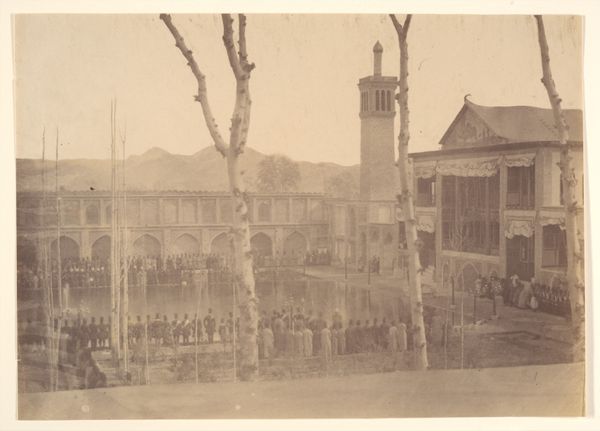
Mensen zittend rond een fontein op een plein in Damascus c. 1900 - 1910
0:00
0:00
print, photography
#
portrait
# print
#
landscape
#
street-photography
#
photography
#
historical photography
#
orientalism
#
islamic-art
#
watercolor
Dimensions: height 231 mm, width 311 mm, height 469 mm, width 558 mm
Copyright: Rijks Museum: Open Domain
Editor: We’re looking at “People Sitting Around a Fountain in a Square in Damascus,” a photograph taken around 1900-1910. It's interesting how the photographer captured this slice of everyday life. What elements of composition stand out to you? Curator: The geometric simplicity and linear structure are most evident. Note how the photograph presents us with a tripartite structure; there is the ground with figures, the trees whose canopies occupy the upper portion, and then a somewhat ill-defined, geometric structure which is a building. This layering, compounded with a sepia color, organizes the reality the photographer experienced. What effect does this layering produce? Editor: It's creating almost a staged feel, like looking at actors on a set. The trees and the figures feel very present, but the building and sky become a backdrop, almost flat. Curator: Precisely. Consider the foreground. The figures, predominantly grouped and seated, introduce an irregular rhythm along the horizontal plane. The contrast is softened by the photographer's choice not to vary poses amongst the people who are represented. Notice also that all are in dark tones. Then, contrast this lower register against the canopies of the trees and what begins to emerge is an intriguing tension and release across vertical, and thus pictorial space. Where does the photograph fall short? Editor: Perhaps that the perspective doesn’t pull the eye deeper into the space? It keeps the eye moving left and right but not back into the building or beyond. I hadn't noticed the layering effect as much before. Curator: Indeed, the tension arises precisely from this limited depth of field, where elements in the background lose clarity. We find ourselves drawn back to the surface, compelled to engage with the structure and forms rather than a sense of infinite depth. It invites reflection on the act of seeing.
Comments
No comments
Be the first to comment and join the conversation on the ultimate creative platform.

